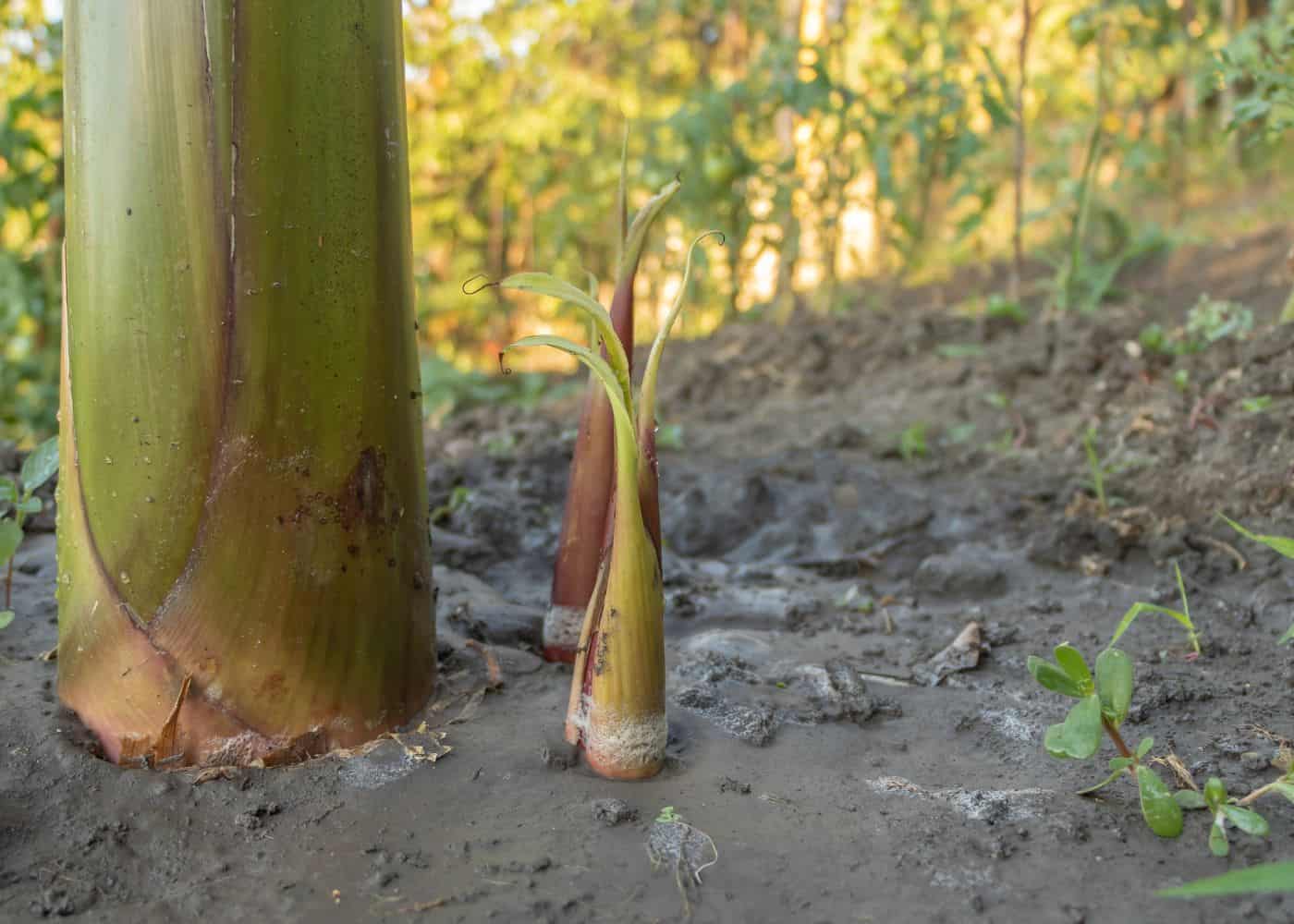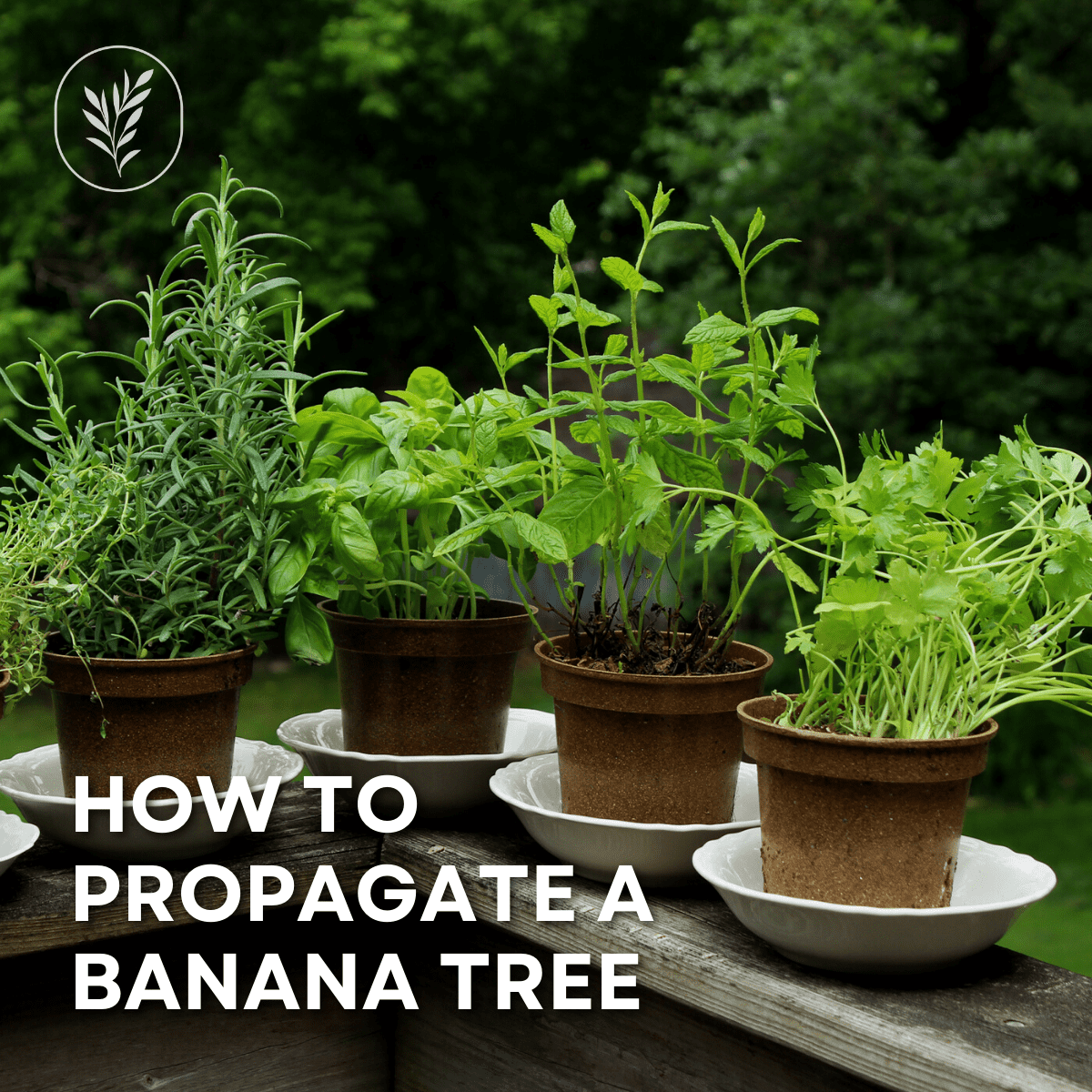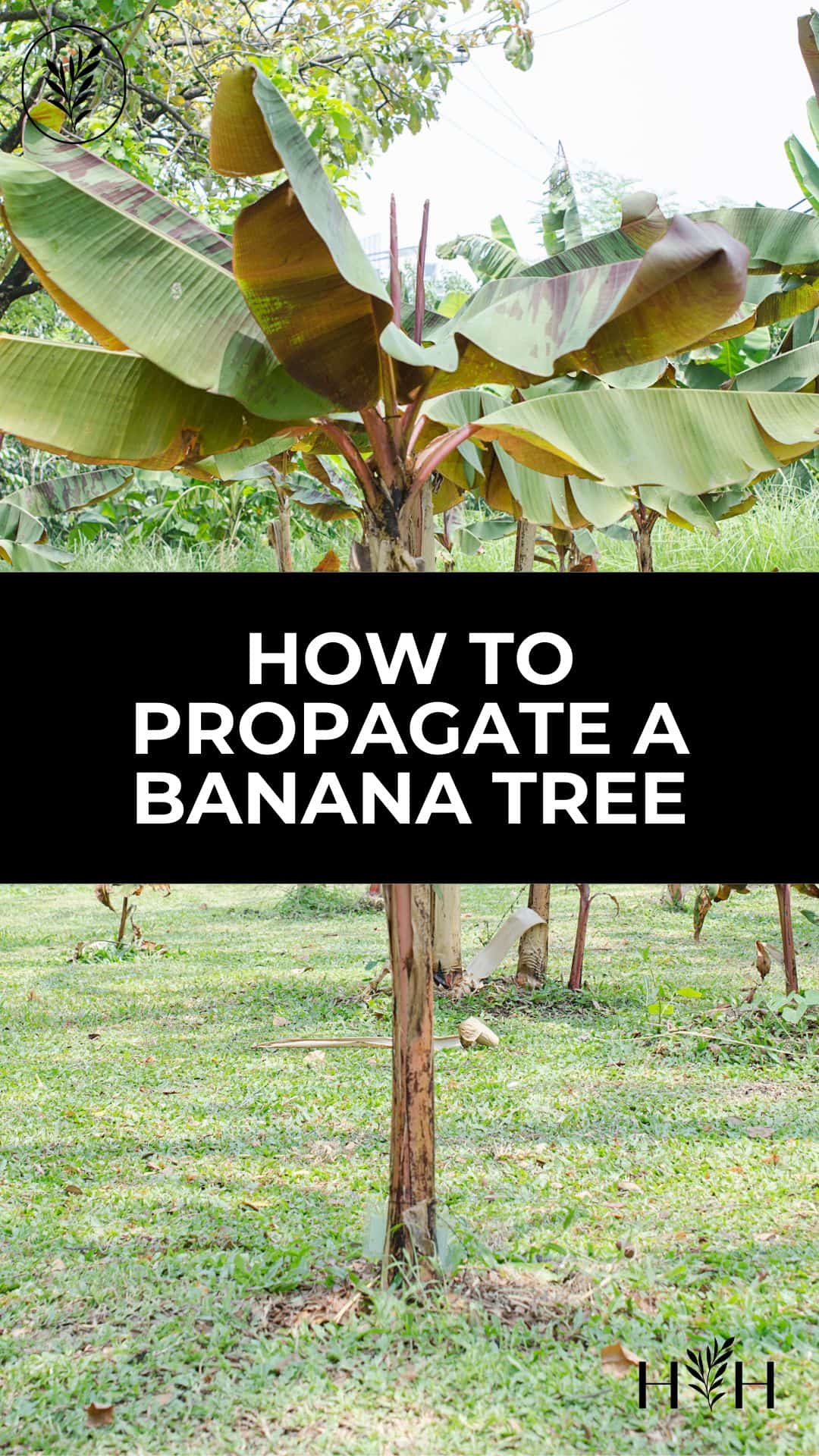Once you’ve successfully grown one banana tree, you’ll likely want a few more of them. That’s where propagating comes in. Here is how to propagate banana trees!
Banana trees can be propagated in several ways, but for home gardeners, the simplest option is division. As long as your banana tree has healthy suckers with enough roots, you can simply remove these and replant them to grow into brand-new trees. Always use sharp and clean tools to avoid the risk of disease.
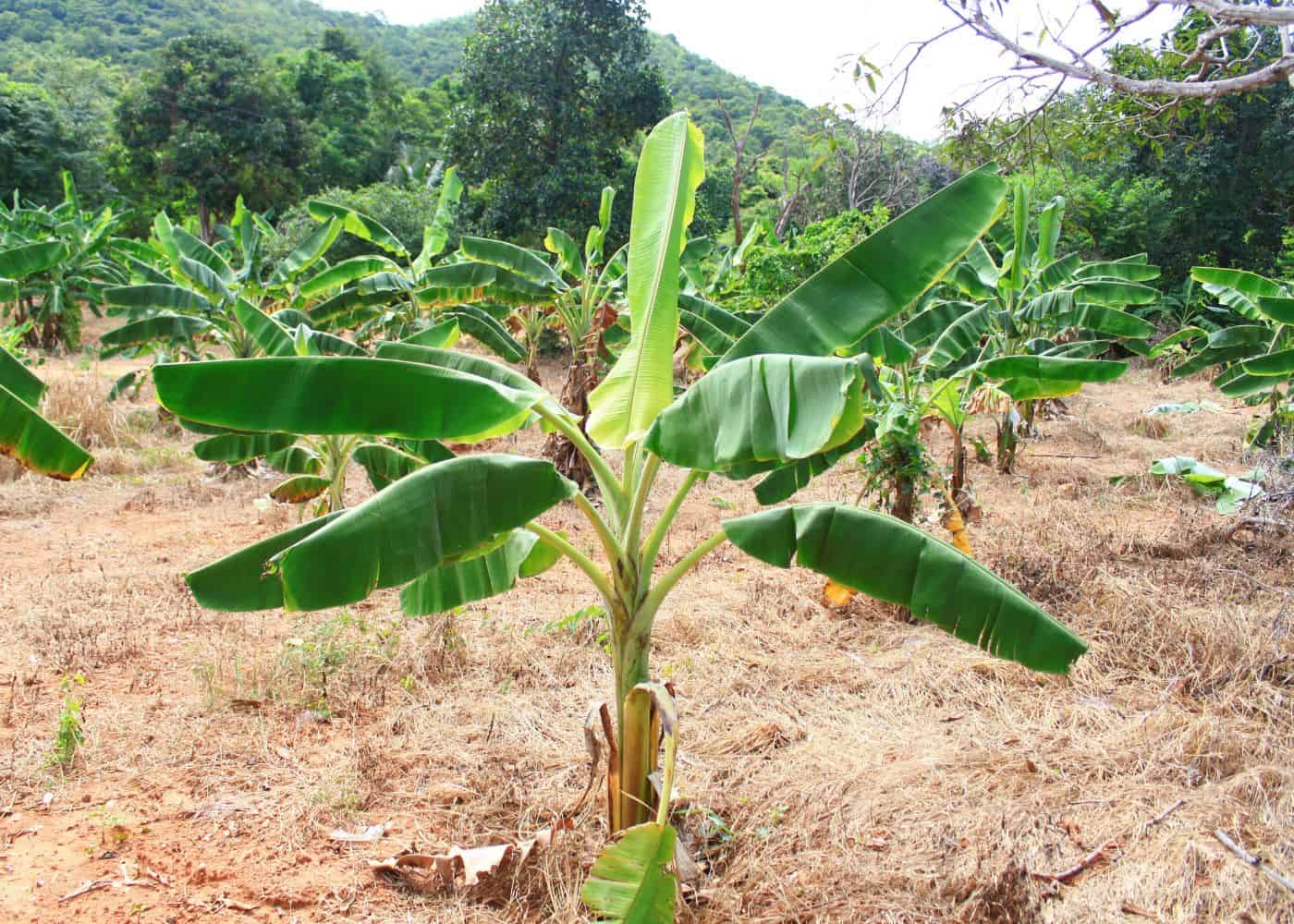
What is the best way to propagate banana trees?
There are several banana propagation methods used by home gardeners and expert growers – tissue culture, seed propagation and division.
Tissue culture is an incredibly technical method of propagation usually performed in a lab. Although it is not the most common, it does allow growers to produce far more banana plants than the trees produce naturally. Due to the controlled conditions, these new plants are also relatively disease free.
Seed propagation is another option and one most gardeners are very familiar with. However, in the case of bananas, this does come with a glaring issue – most bananas don’t produce seeds. Some species do, but most common banana cultivars (including those produced commercially) don’t have seeds, making this method impossible.
The preferred method of propagation for some farmers and home gardeners is division. Banana trees produce suckers or pups – small versions of the main plant emerging from the root ball. When removed from the parent plant, these are able to grow on their own and will eventually turn into full banana trees.
When is the best time to propagate banana trees?
When it comes to seasons, the best time to propagate banana trees is either spring or fall.
Propagating in spring during their peak growing season will help the roots establish quicker, producing stronger plants overall. However, this can also disturb the parent plant when it should be focusing on producing fruits, potentially impacting your harvest that year.
You can also wait until fall to propagate once all your bananas have been harvested. As this is typically when banana trees are pruned and cut back, this is a great time to divide your tree and remove all viable suckers for propagation.
But, that does mean they will need to be protected from cooler temperatures soon after planting. The trees will be more vulnerable while trying to establish, making them more susceptible to damage.
It’s best to avoid propagating in summer or winter. In summer, temperatures are high (necessitating frequent watering) and the original trees will be at the peak of producing fruits. In winter, growth slows dramatically and it will take the trees far longer to establish, potentially leading to issues with rot.
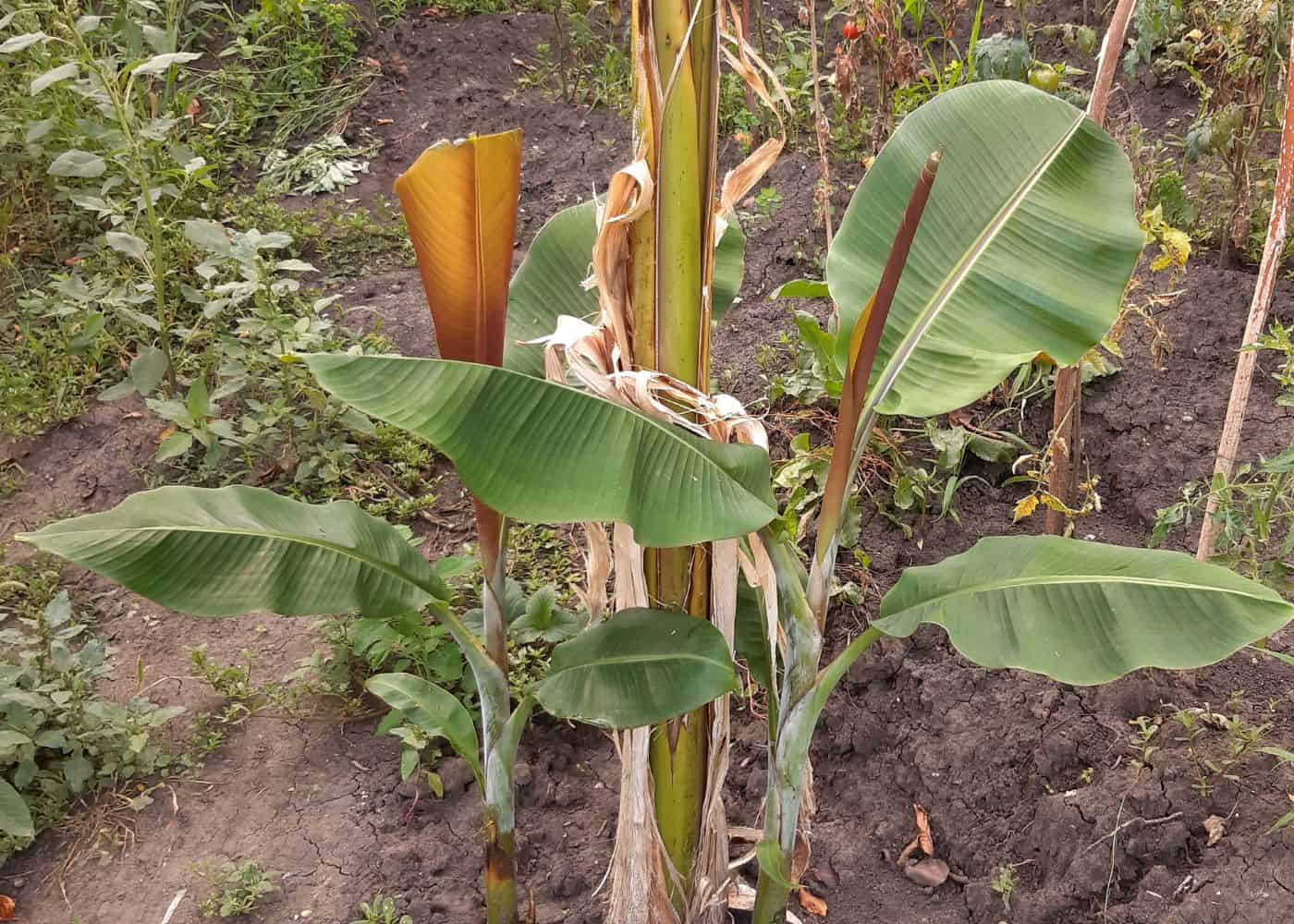
What do you need to propagate banana trees?
To propagate your banana tree, you need to start with a banana tree with suckers. Your tree cannot be divided without them. As long as your banana tree is healthy and in the right conditions, it should regularly produce suckers that can be removed to propagate.
Suckers need to be relatively large with their own root systems before they can be removed. Smaller suckers with few roots still rely on nutrients and water from the parent plant to grow and survive. If these are removed too early, they may not root at all and have a high chance of rotting in moist soil.
If your banana tree is in a container, you’ll also need individual containers for all your suckers, as well as an airy and nutrient-rich potting soil. If you’re planting straight into the ground, a bag of compost for soil amendments is recommended but not always necessary, depending on the quality of your soil.
Finally, you’ll need a sharp knife or shears to remove the suckers from the main plant. Make sure your knife is thoroughly clean to stop the spread of harmful bacteria to the vulnerable new roots. Your tools should also be as sharp as possible to promote health and quick healing.
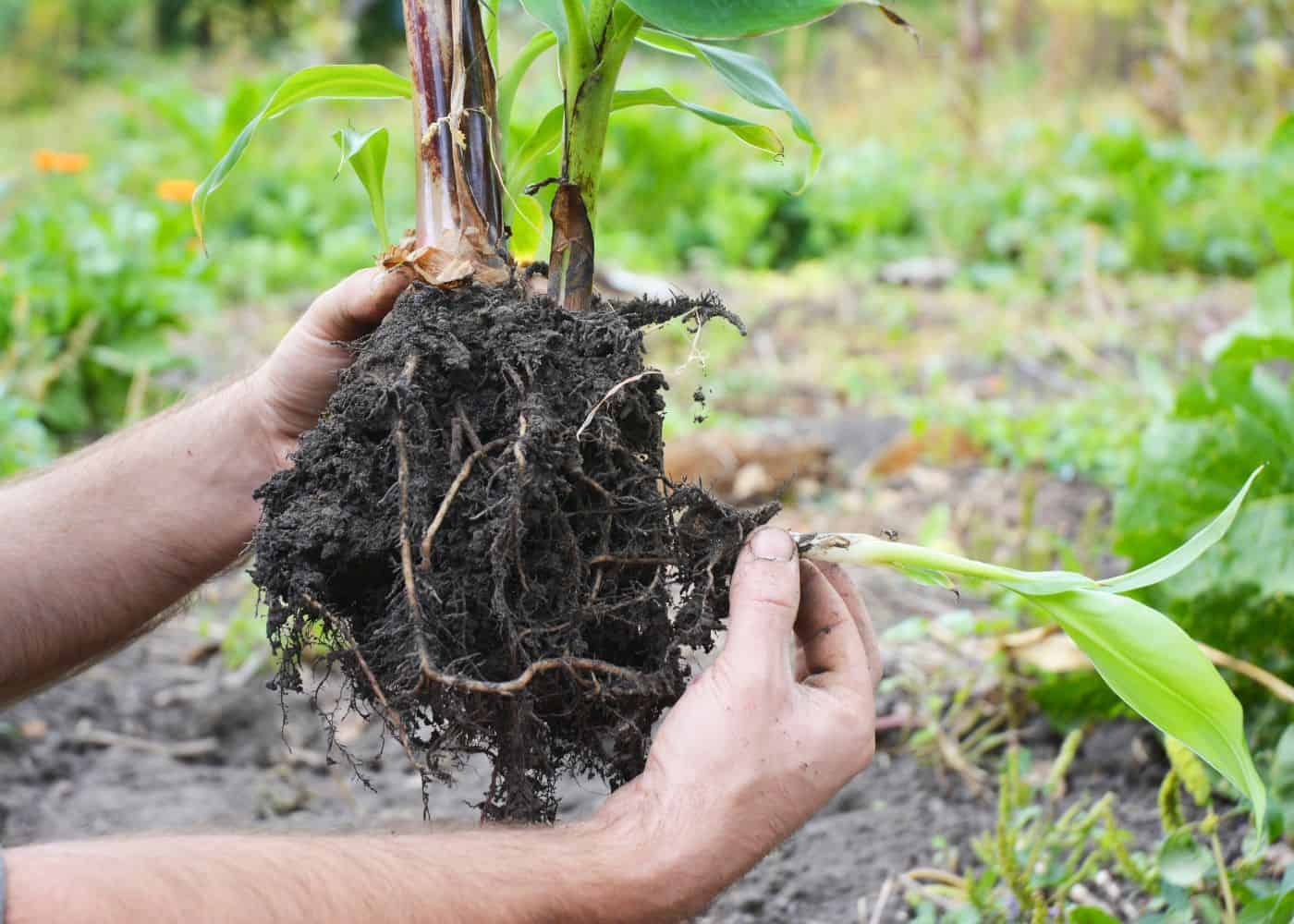
How to propagate banana trees
With your tools gathered, you’re ready to head into the garden to propagate.
Uproot the plant
It’s best to start by uprooting the plant, whether in the ground or planted in a container. While this is not always necessary as some suckers can be removed by cutting below the soil, it does allow you to get a closer look at the roots to identify the perfect place to cut.
Without uprooting the plant, you won’t clearly see where the sucker separates, making it difficult to remove without damaging the sucker or even the parent plant.
Identify suckers
With a closer look at the roots, identify which suckers are ready to be propagated – in other words, suckers that have enough roots to survive on their own. There may only be one, but healthy banana trees can produce a few suckers at one time.
Only remove the suckers that are large enough to be replanted, either cutting the rest off or simply leaving them attached to the parent plant to continue growing.
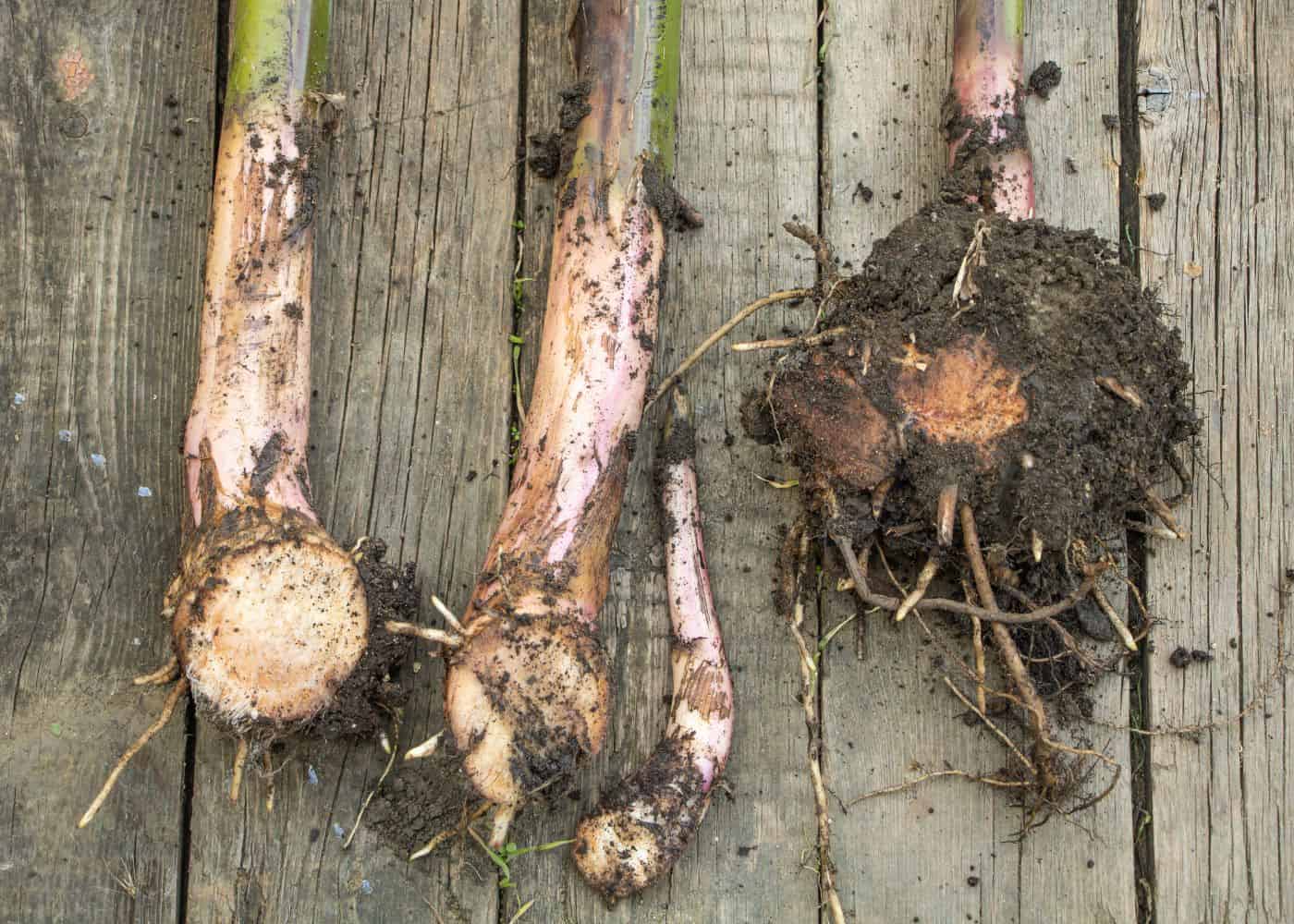
Remove suckers with a knife
To remove suckers, identify the point where they connect to the parent plant. You will likely need to pull the roots apart slightly for a better look.
Then, using your knife, cleanly cut between the sucker and the parent plant to remove it completely. Avoid using blunt tools or hacking as this can damage the roots and lead to rot.

Replant
Finally, replant the individual suckers into their own pots or straight into the ground. You can follow our advice on planting banana trees for the instructions. This is a great way to relocate banana trees to a new part of your garden, or even to pot one up to grow indoors as a houseplant.
FAQ’s about propagating a banana tree
How do you dig up a small banana tree?
Digging up a small banana tree (called a “pup”) is not difficult, but it does require some care. Start by loosening the soil around the base of the tree with a garden fork or spade.
Gently lift and wiggle the trunk to loosen any roots that may be holding it in place. Once loose, carefully pull out the entire root ball from its hole and set aside for replanting later. If necessary, use pruning shears to cut away any remaining roots before lifting out of the ground.
Before you go…
Not only will you have an attractive and unique addition to your landscape, but you’ll also enjoy the delicious fruits of your labor. With careful preparation and attention to detail during the transplanting process, you can ensure that your banana tree thrives in its new home.
Resources
- How fast does a banana tree grow?
- When do banana trees bear fruit?
- How do banana trees grow?
- Should you cut dead leaves off banana trees?
- How to plant a banana tree in 4 easy steps?
- How to fertilize banana trees for high yields?
- How to prune banana trees?
References
- Stewart, M. (2022, November 7). How to Care for a Banana Leaf Plant, Which Will Add Tropical Flair and Color to Sunny Rooms in Your Home. Martha Stewart. Retrieved February 17, 2023, from https://www.marthastewart.com/8335768/how-to-care-for-banana-leaf-plant
- Bous, S. (2022, October 18). How to Grow and Care for a Banana Plant Indoors. Better Homes & Gardens. https://www.bhg.com/gardening/houseplants/care/how-to-grow-a-banana-plant-indoors/
- Cape, M. (2019). How to Grow Banana Plants Like a Professional: Beginner’s Guide and Tips to Get You Started. Independently Published.
- Soluri, J. (2021). Banana Cultures: Agriculture, Consumption, and Environmental Change in Honduras and the United States. University of Texas Press.
- Turner, D. W. (2005). Banana Root System: Towards a better understanding for its productive management. Bioversity International.
Need more info?
Are you interested in learning more about propagating a banana tree? Here are our best articles about it!


